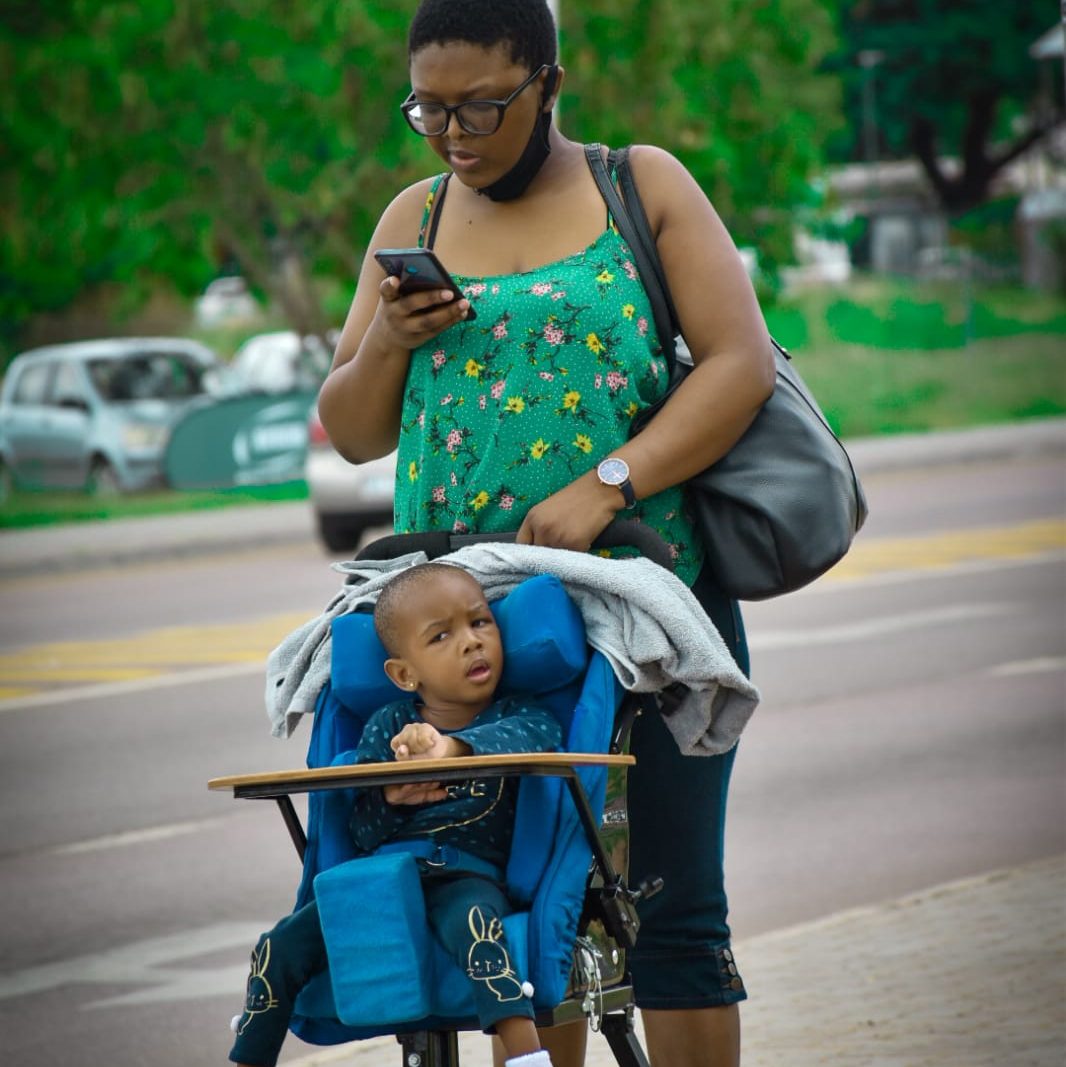Congenital disorders
Raising a child with cerebral palsy: ‘I chose not to be another barrier in her life’
In October 2017, Reokopetswe Molobi (33) from Ramaphosa village in Moretele Local Municipality, had a difficult and prolonged labour.
“My pregnancy was great. I had no complications until my due date. I was admitted and spent three days in labour,” she says.
“Moments after my daughter was born they told me she has cerebral palsy. That was the first time I had ever heard of it.”
Cerebral palsy is one of the most common disabilities in childhood. South Africa doesn’t have a registry of the number of people living with the condition. But it’s estimated that for every 1 000 babies born, about 10 will have cerebral palsy. This is a group of disorders that affect a person’s ability to move and maintain balance and posture. It’s caused by damage to the developing brain.
The birth of her child completely changed Molobi’s life. She had to adjust and accept mentally that she was a mother to a child with special needs. She remembers how difficult it was to find a nanny who could take care of her daughter.
“I struggled to get a nanny because I could not just get a regular nanny, it had to be someone my daughter trusted and someone who knew about and understood cerebral palsy.”
Challenges
“It’s expensive to raise a child with a disability. There are regular check-ups, transportation is the worst,” says Molobi. Like millions of other South Africans, the single mom doesn’t have a car and relies on public transport, especially taxis.
She says taxi drivers are rude to her and her daughter because the drivers expect them to be fast when entering the taxi. There are no wheelchair friendly taxis in their local taxi association. Sometimes they wait for over 30 minutes before a taxi even stops for them.
Another challenge is meeting the physical needs of a growing child. Assistive devices like specialised wheelchairs, for example, are costly.
“The changing of the bakkie [a special wheelchair] to accommodate my child is also a challenge because a child cannot be in one bakkie forever. The more she grows we’ll have to change it [wheelchair] so that she is comfortable.”
Stepping up and raising awareness
It’s been a hard journey for Molobi. But she has a great support system. This is her first child and she didn’t know how to take care of her at first. But her mother has been there for her all the way.
In March 2021 Molobi started a foundation called Binang CP Foundation. The aim is to spread awareness and educate people about the disability. She also helps other parents whose children have cerebral palsy to access the relevant institutions. Most of all she wants to advocate for those who, like her daughter, can’t speak for themselves.
“I feel a difference has been made since I started. More parents are coming forward, that is what I call a milestone,“ she says.
Binang CP Foundation has hosted more than five events and workshops for cerebral palsy awareness.
“I chose not to be another barrier in her life by not letting her explore. I started the foundation because I wanted people to see that disability is not a curse; there are still people who think disability is a curse or witchcraft and discriminate against people with disabilities,” she says.
Molobi says her daughter is a blessing. When she sees a smile on her daughter’s face she says she “wouldn’t change this for anything in the world”.
Molobi’s daughter is turning six years’ old in October and is currently enrolled at pre-school.
Seeking help
Dr Jeanette Modungwa, medical doctor for the Department of Health in the Northwest works in Moretele says cerebral palsy can be caused by congenital abnormalities during the foetus’ development. Sometimes it can be caused by brain damage due to a baby being deprived of oxygen during birth. This usually happens when the birth is prolonged.
She highlights the importance of parents seeking out medical help when they are worried about their children’s development or them missing milestones. The first step is to go to their local clinic where children can be referred to specialists for further evaluation. – Health-e News
.pp-multiple-authors-boxes-wrapper.box-post-id-47452.pp-multiple-authors-layout-boxed.multiple-authors-target-the-content.box-instance-id-1 .pp-author-boxes-avatar img { width: 80px !important; height: 80px !important; } .pp-multiple-authors-boxes-wrapper.box-post-id-47452.pp-multiple-authors-layout-boxed.multiple-authors-target-the-content.box-instance-id-1 .pp-author-boxes-avatar img { border-radius: 50% !important; } .pp-multiple-authors-boxes-wrapper.box-post-id-47452.pp-multiple-authors-layout-boxed.multiple-authors-target-the-content.box-instance-id-1 .pp-author-boxes-meta a { background-color: #655997 !important; } .pp-multiple-authors-boxes-wrapper.box-post-id-47452.pp-multiple-authors-layout-boxed.multiple-authors-target-the-content.box-instance-id-1 .pp-author-boxes-meta a { color: #ffffff !important; } .pp-multiple-authors-boxes-wrapper.box-post-id-47452.pp-multiple-authors-layout-boxed.multiple-authors-target-the-content.box-instance-id-1 .pp-author-boxes-meta a:hover { color: #ffffff !important; } .pp-multiple-authors-boxes-wrapper.box-post-id-47452.pp-multiple-authors-layout-boxed.multiple-authors-target-the-content.box-instance-id-1 .pp-author-boxes-recent-posts-title { border-bottom-style: dotted !important; } .pp-multiple-authors-boxes-wrapper.box-post-id-47452.pp-multiple-authors-layout-boxed.multiple-authors-target-the-content.box-instance-id-1 .pp-multiple-authors-boxes-li { border-style: solid !important; } .pp-multiple-authors-boxes-wrapper.box-post-id-47452.pp-multiple-authors-layout-boxed.multiple-authors-target-the-content.box-instance-id-1 .pp-multiple-authors-boxes-li { color: #3c434a !important; }

